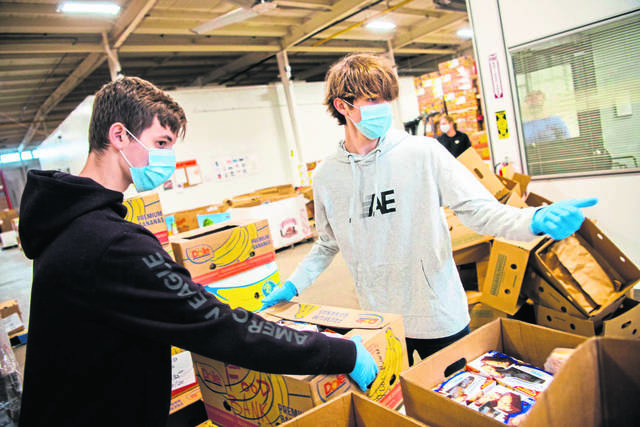Editorial: Food banks filling holiday need
Certain reminders come to us every holiday season. Red kettles and ringing bells at shopping center doors urge us to drop in a few coins to help those in need. A box waits to collect toys for kids who won’t get any otherwise.
And perhaps most ubiquitous is the food drive.
Schools collect food. So do offices and churches. A business might offer a deal if you bring an item to donate. We are reminded that while some people braise a brisket and make latkes for Hanukkah or build a house out of Christmas candy and cookies, others don’t have enough for a simple meal, much less a holiday feast.
The need is constant. In a typical December, service organizations and communities of faith pack up tons of holiday food baskets or ladle up turkey dinners by the thousands.
But 2020 has reached an extreme. While for many it might be the year of the pandemic, it could also be the year of the food pantry as millions have turned to those organizations for help when the covid-19 restrictions have affected jobs and paychecks, making it hard to keep families fed.
On Tuesday, 600 families reserved slots for the monthly food distribution from the Greater Pittsburgh Community Food Bank and Allegheny Valley Association of Churches at Pittsburgh Mills mall. November and December signups were up 39% over September and October. Thousands more families rely on the Westmoreland County Food Bank.
That is unsurprising. Unemployment in the area was 4.4% in 2019. In October 2020, it was 7.2%, according to the state, and that was after steady decreases each month from the highs of April and May.
Feeding America, the national network for food banks, projects overall food insecurity rates in the U.S. to have grown from 37 million to between 40 million and 54 million by the end of the year. Hunger could affect as much as 25% of American kids.
A study published by the American Academy of Pediatrics showed food insecurity made moms anxious and depressed and contributed to behavioral problems in young children. None of those are helpful when parents have been home with their kids for the majority of the last nine months.
The food bank makes a difference, letting people know there will be a next meal. Tuesday’s families received three boxes of food — one of produce, one of frozen food and one of nonperishables.
What the food banks need is the money to keep providing those boxes.
Donations and support from individuals is an important part of that. But the longer the pandemic and responses like the new Pennsylvania restrictions that go into effect Saturday go on, the more major support is important.
WCFB’s $12 million in income for 2019 included $9 million in donated food and $1.78 million in corporate and individual cash donations. If quarantining and social distancing makes it harder to have collection events to acquire the donated food and strapped businesses and donors can’t afford to give money, food banks will be caught between increased need and decreased options.
That means prioritizing the money that comes from sources like state and federal funding. WCFB received $1.65 million in that money in 2019. If you can’t donate food, time or money, you can still help by contacting your legislators: Tell them to advocate for food banks as they debate aid packages.
Remove the ads from your TribLIVE reading experience but still support the journalists who create the content with TribLIVE Ad-Free.

